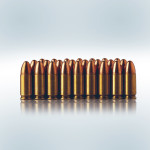Advanced or Elite Krav Maga Training and Programming Require Substantial Thought and Delivery.
Last week I took the time to explain how I developed my Krav Maga Advanced Training curriculum to a classroom of advanced trainees.
The process was a multi-decade process of trial and error with my own training and with select private clients who were seeking more than a run through the belt system. The results have been extraordinary thus far – with 30+ students successfully defending a live blade straight stab attack that consists of approximately 15 successive attacks. I’m amazed at the progress and the growth throughout the group that’s now dealing with overhead stabbing attacks and handgun threats from the front.
While 99 percent of the credit must be given to the dedication these students show and the work each has completed, I’m pleased to have offered something that is resonating with the students. Here’s what I did (in a nutshell).
- Systematic Approach: I first broke the system down into a family tree of techniques where the relative position of each technique to the other, was determined by shared motor skills that form the basis of the defense. I then identified the shared motor skills and created a new training progression based on mastery of the motor skill. Once the motor skill is mastered, all the techniques that share the motor skill are introduced. You certainly don’t have to follow this process, but developing a teaching method using this example as a rough approximation is a must.
- Orientation Approach: As a secondary learning platform, I utilized an orientation process – whereby the students learn various defenses based upon the orientation of a group of attacks. For instance, if I use the vertical line that represents the body from the feet on the floor to the top of the head, I have a basis to discuss grabs and holds along this vertical line. Students respond to this concept as a progression that can be logically followed along a line with which they are familiar – their own bodies. From toe pick to single leg to tackles, bear-hugs, pummels, and Thai clinches, the instructor can introduce these defenses through orientation.
- Foundational Approach: Last but not least, I intermittently go back to the classic belt system, and extract the concepts I utilize to teach both the Systematic and Orientation paradigms in an effort to apply these new tools to previously “covered” materials (i.e. yellow belt). The results are light years faster in developing and much more substantial.
The truth is…if you’re teaching advanced or elite training programs, you must be very thoughtful in how you approach, develop, and communicate Krav Maga to those who join your advanced programming. These students are committing time and resources, and you must deliver insight and instruction commensurate with the words ADVANCED and PROGRAMMING.




